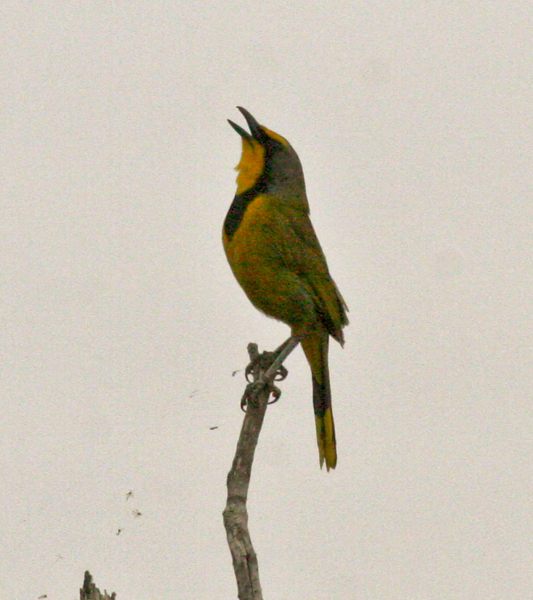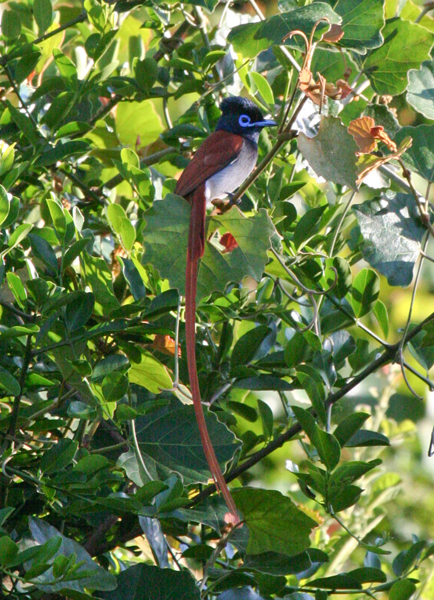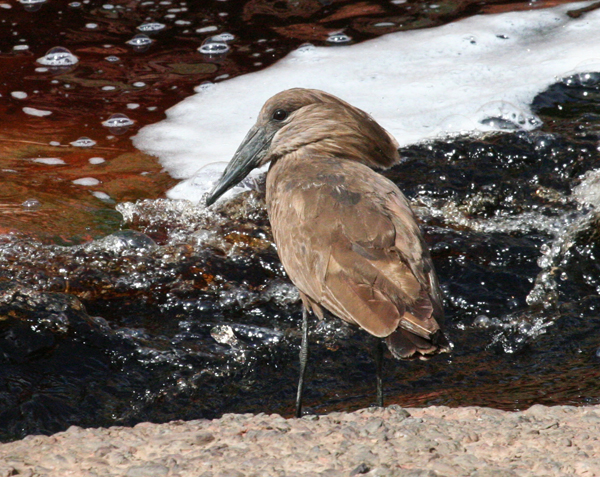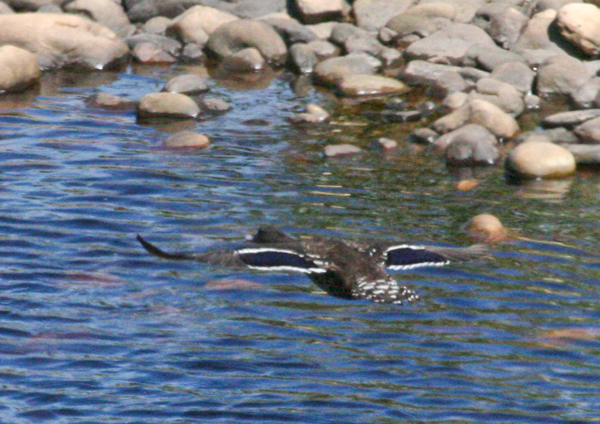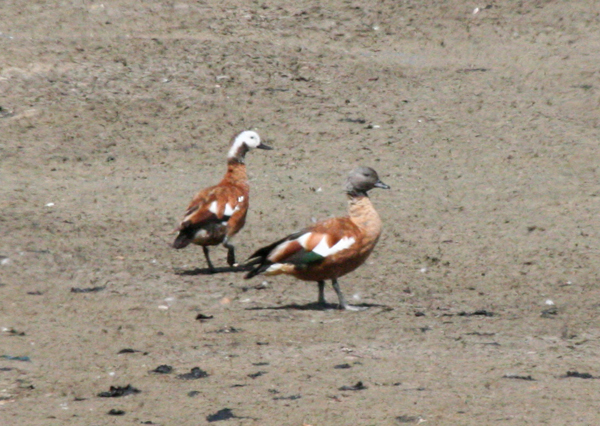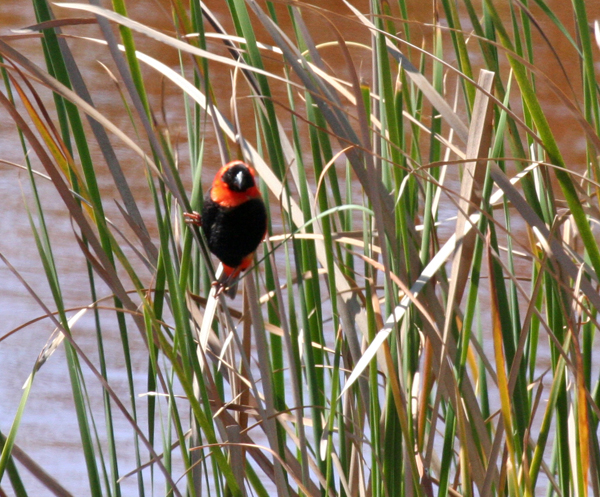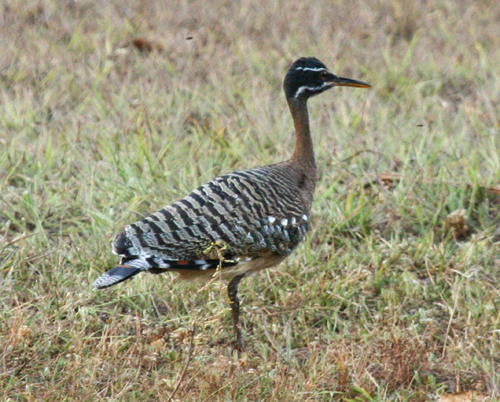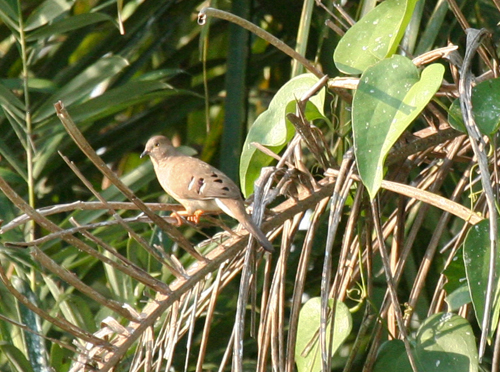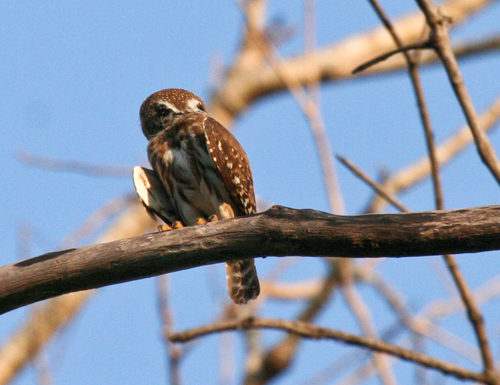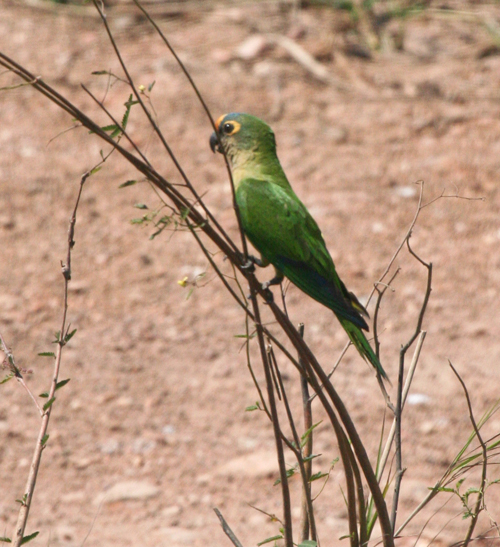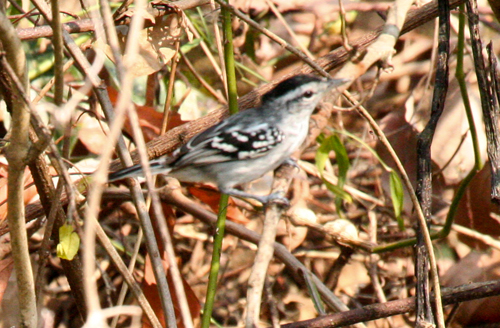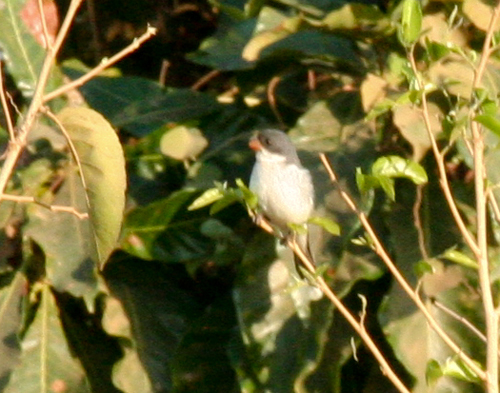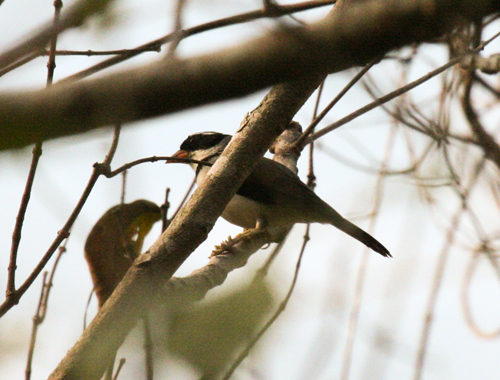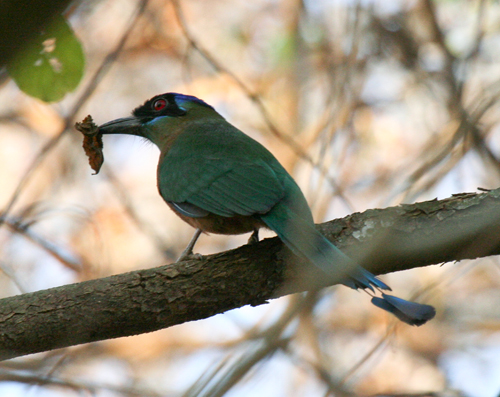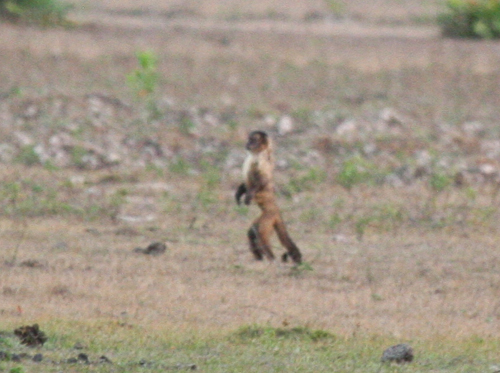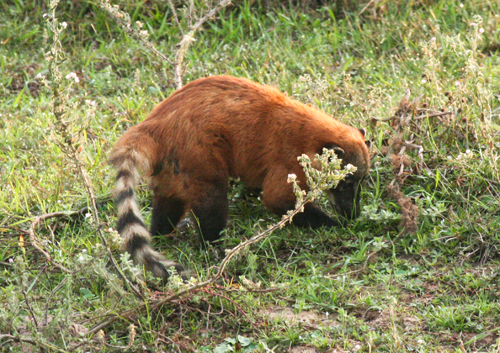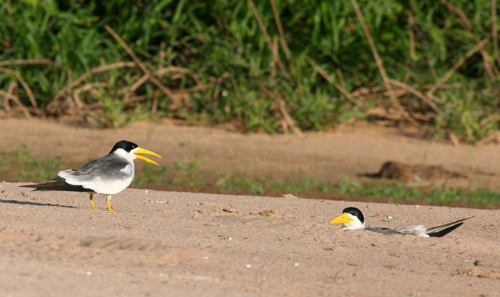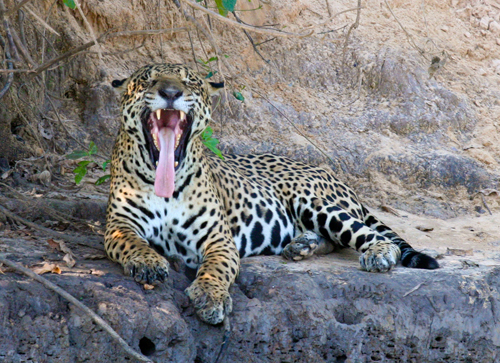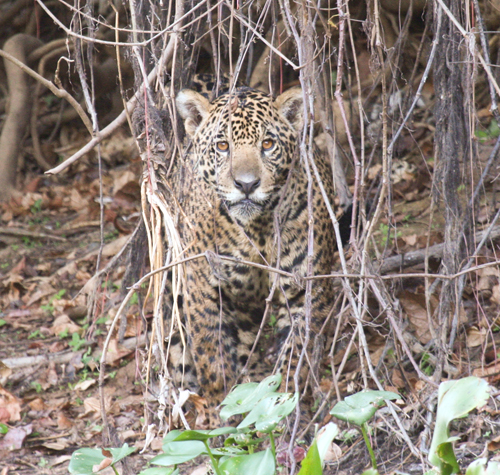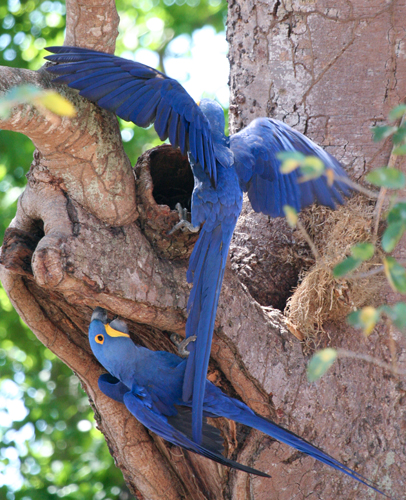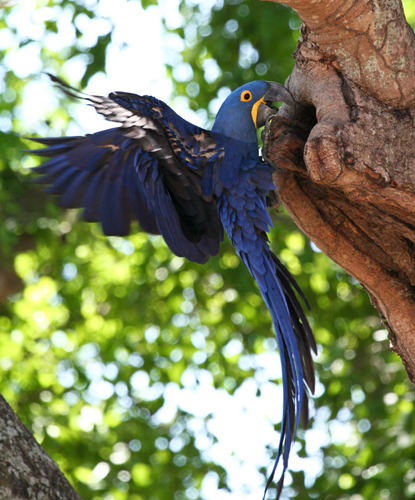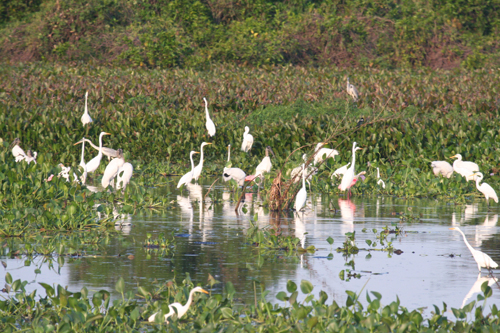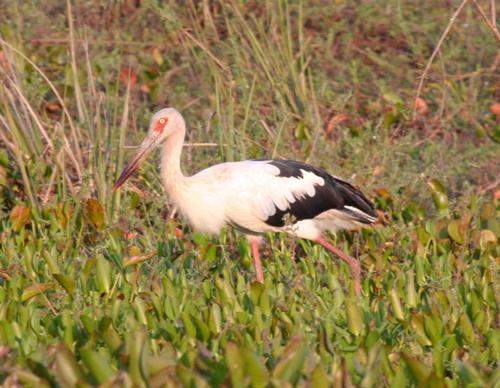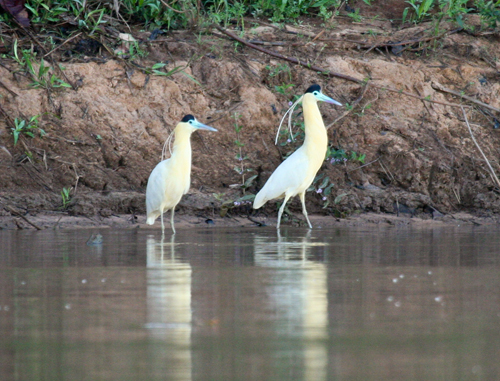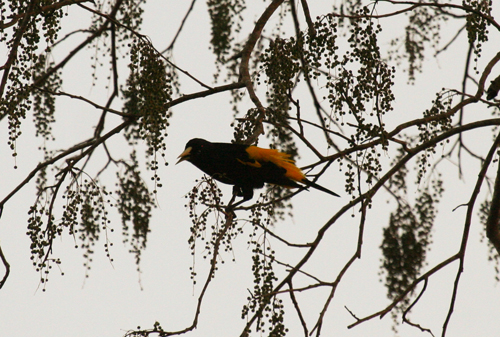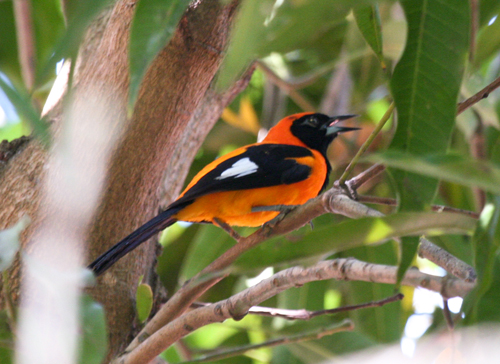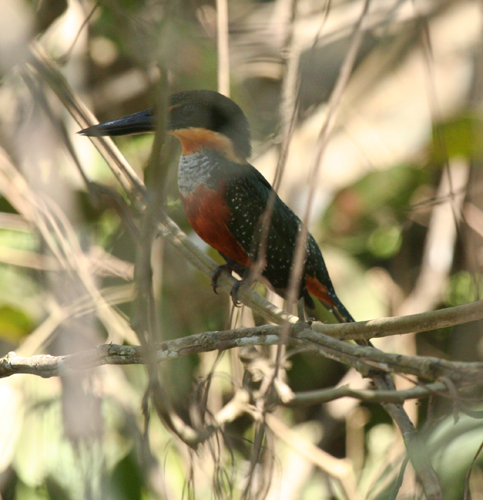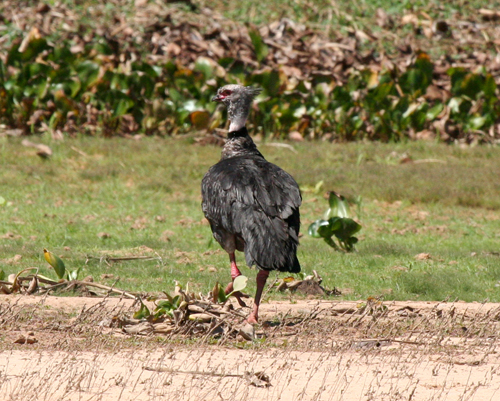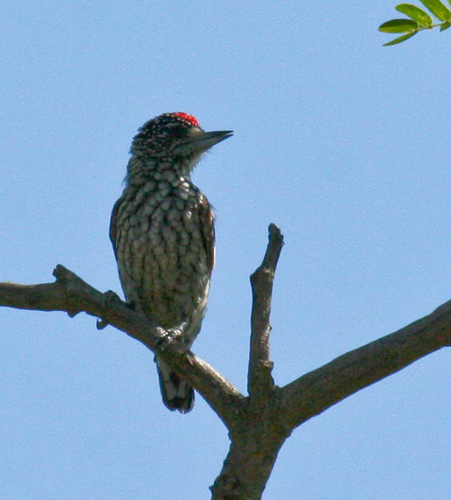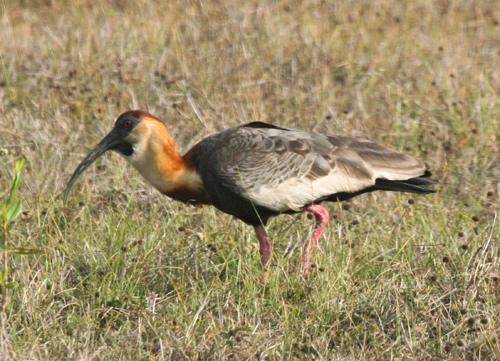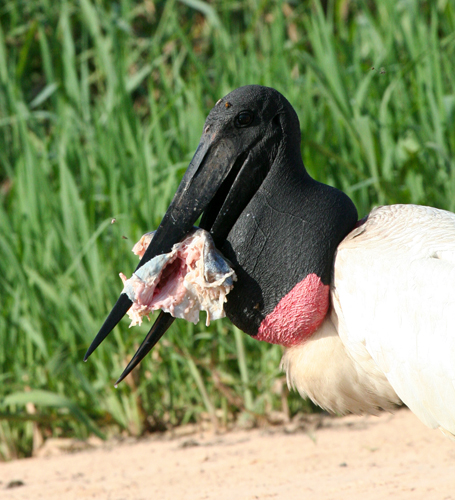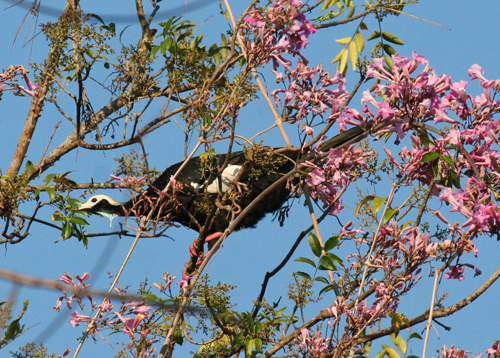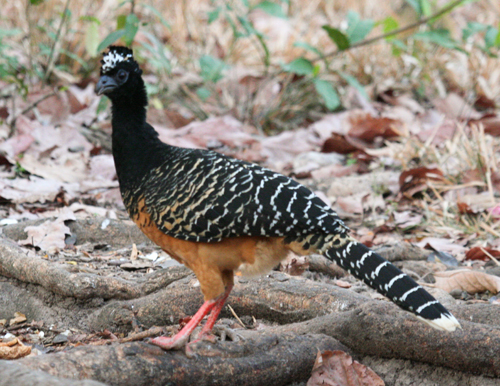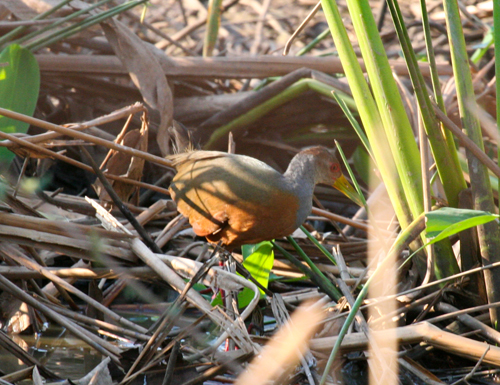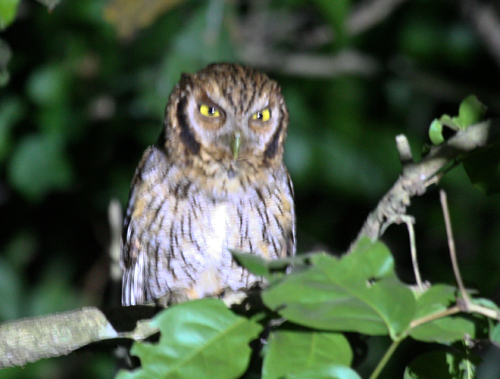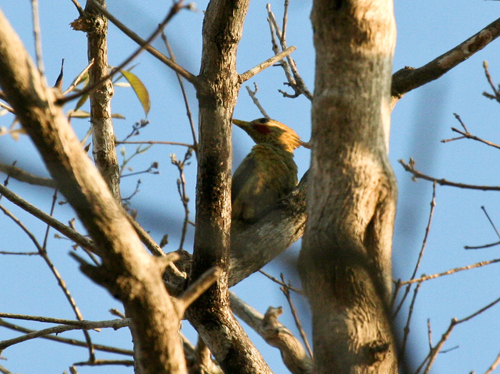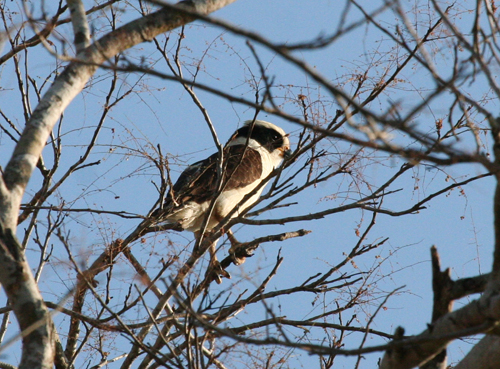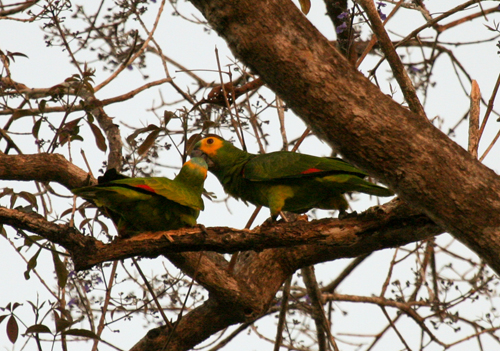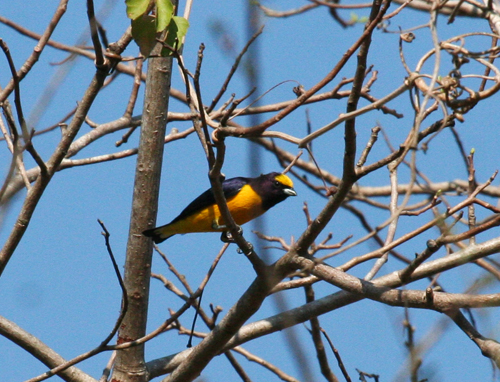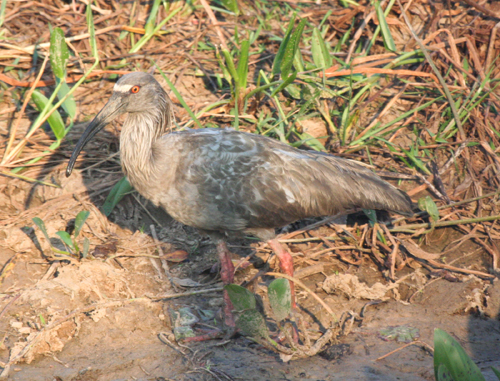On December 2 my guide from Albatross Birding and Nature Tours, Rodrigo Reyes, picked me up at my hotel in Providencia and we drove to the Lampa/Batuco area northwest of Santiago. At these wetlands we found Coscoroba Swans, a single, laggard Andean Goose, 8 species of ducks, 3 grebe species, 4 heron species, several Cinereous Harriers and Variable Hawks, many Chimango Caracaras, 3 Coot species, several shorebirds, Brown-hooded Gulls, Correndera Pipits, and other species common in the area.
My favorite finds here were the Many-colored Rush Tyrants (which came close and showed off their amazing colors), the secretive Wren-like Rushbirds, Austral Negritos, Common Diuca Finches singing all around, a few Grassland Yellow-finches, many Yellow-winged Blackbirds, and colorful, red-breasted Long-tailed Meadowlarks.
We returned to Santiago to explore the urban park, Parque Bicentenario. Although it is surrounded by the city, it boasts a surprising number of interesting birds. Among them were a number of colorful Spot-flanked Gallinules, Plain-mantled Tit-spinetails nesting in a lamp post, surprisingly obvious Rufous-tailed Plantcutters (great name), Chilean Mockingbirds, and the ever present Rufous Collared Sparrows. Here also we saw several Long-tailed Meadowlarks at close range.
On the 3rd we drove southeast of Santiago to Lake Colbun and from there northeast to Vilvhes Alto where we spent the night. The next day we hiked a long way among the wonderful trees in the Altos de Lircay National Park. An old North American friend, California Quail, introduced to Chile long ago, were seen in several locations. Among the new and interesting sightings were Picui Ground Doves, Chilean Pigeons, Chilean Flickers, Magellanic Woodpeckers, Austral Parakeets, a couple of Green-backed Firecrowns, Thorn-tailed Rayaditos, Dusky-tailed Canasteros, White-throated Treerunners, White-crested Elaenias, Fire-eyed Diucons, Chilean Swallows, Patagonian Sierra-Finches and Austral Thrushes. We returned to Santiago for the night.
On the 5th I was picked up at the hotel by a different Albatross guide, Paola Soublette. We drove first to the Yerba Loca and Farellones areas east of Santiago where we spent the entire day. Highlights were the Crag Chilias, the amazingly close and long view of a perched adult Andean Condor (plus a dozen or more overhead), Black-chested Buzzard Eagles, Black-winged Ground Doves, a most cooperative Magellanic Great Horned Owl, great looks at a Giant Humming bird at the same time that we were looking at a Striped Woodpecker on its nest, Rufous-banded Miners, Scale-throated Earthcreepers, Cream-winged and Gray-flanked Cinclodes, Cordilleran Canasteros, a spectacular Chest-nut throated Huet Huet, perky Moustached Turcas in relative abundance, White-browed Ground-tyrants, Black-billed Ground-tyrants, Gray-hooded Sierra Finches, Mourning Sierra Finches, Greater Yellow-Finches, and Yellow-rumped Siskins. A very productive day.
The next morning we left Santiago to drive down to the Rio Maipo estuary and to spend the day birding northward on the coast. We finished the day at the seaside village of Quintero and spent the night at a beautifully located, older hotel with a view of the sun setting over the Pacific. Not only was the view great, but the dinner at the Hotel’s dining room was among the best of the trip.
Along the way we found Black-necked Swans, Silvery Grebes (Occipatalis subspecies), Peruvian Pelicans, Peruvian Boobies, Red-legged Cormorants, Guanay Cormorants, a surprising (to me) Stripe-backed bittern, a Collared Plover, American and Blackish Oystercatchers, several common shorebirds, a single Gray Gull, Kelp Gulls, beautiful Inca Terns, South American Terns, Elegant Terns, a flock of thousands of Black Skimmers, a closeup Seaside Cinclodes, and one of the most interesting birds of the trip, Des Murs Wiretails (after a short but strenuous walk along the river bank in brush and mush).
On the 7th I joined several other birders for a pelagic trip on the Pacific led by Rodrigo. My new birds for this pelagic trip were Humboldt Penguins, Royal Albatross (Southern subspecies), Royal Albatross (Northern subspecies), numerous Salvin’s (Shy) Albatross, a probable juvenile Chatham Albatross, Westland Petrels, (close and plentiful enough to learn to distinguish them from the similar White-chinned Petrels). Several other pelagic species that I have previously seen were somewhat common. Among the “misses”, at least missed by me although seen by some of the participants, were Peruvian Diving-petrels and a possible Juan Fernandez Petrel. We returned to shore about noon, had lunch and a short rest and then I joined Paola again for the trip back to Santiago, including some more birding along the way. We saw many of the same species that we had seen the day before, some of them far better.
On my last day in central Chile, Paola drove from Santiago up to the Yeso Valley. The main target of the quest was the iconic Diademed Sandpiper Plover. Along the way we were able to find a few new trip birds, including Torrent Ducks, Band-tailed Earthcreeper, Crag Chilia, and Yellow-rumped Siskins. The road was very rough, narrow and high. Not only that but this was a holiday in Chile, and there were lots of vehicles vying for road-space. Paola had her hands full and several times we had to stop perilously close to the cliff-edge to make way for opposing traffic. Finally, we reached the Yeso Reservoir, and traveled on upward to the very end, where we hoped to find the Diademed Sandpiper Plover. This required a very wet hike through in a soggy bog. Along the way we encountered a nice flock of 20 or so Upland Geese, that were willing to allow us to pass nearby without flushing. An hour or so into the hike, I spotted the target bird only a few feet from me, feeding in a shallow pool. I spent the next half hour, simply gazing at this beautiful bird, time enough for Paola to try for a video in which both I and the bird appeared. After a long and close look at this, one of the most beautiful of birds, we started back. As we were leaving the bog we were fortunate to find another one of my top 2 targets of the trip: Seedsnipes. Seedsnipes are a family found only in South America and primarily only in Chile. I had never seen any species of this family and wanted to add it to my list. A pair of Gray-breasted Seedsnipes circled us and gave us a relatively close view, before we had to depart to return to Santiago, and go down the awful road we had come up.
I wanted to buy some lapis lazuli jewelry for my wife, whose birthday occurred while I was in Chile. Lapis lazuli, a semi-precious metal, is mined in Chile (and Afghanistan) and local artisans create some beautiful pieces. Thanks go to Paola who took time out from our birding to take me shopping in the old market in Santiago. (She did not think much of my original plan to find something at one of the airport shops). The market was an interesting place to visit and we found a lapis lazuli butterfly pendant and earrings that I liked very much, and so does Barbara.
Sorry, I have no pictures to include in this Blog. Maybe I will have some photos on my next trip, when Barbara accompanies me and exercises here photographic magic.
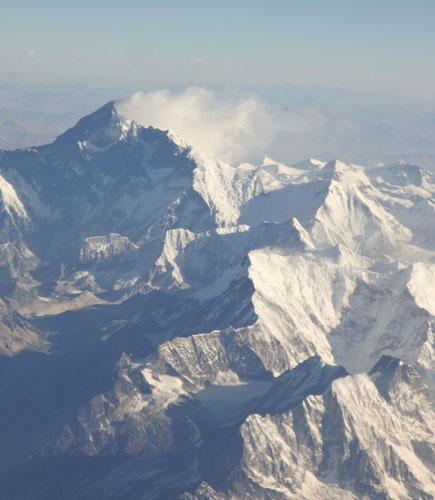
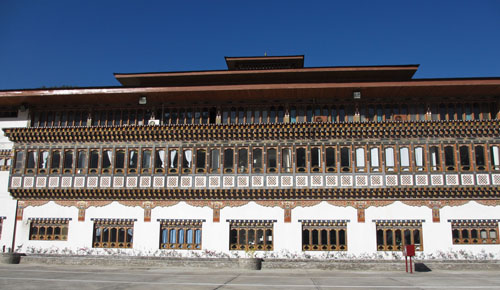
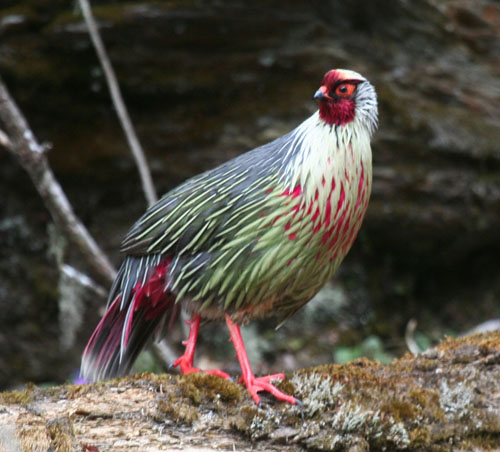
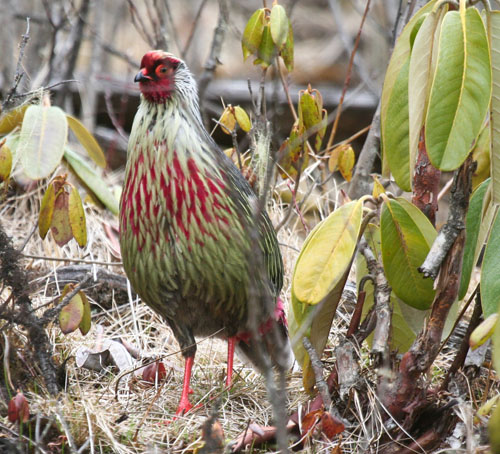


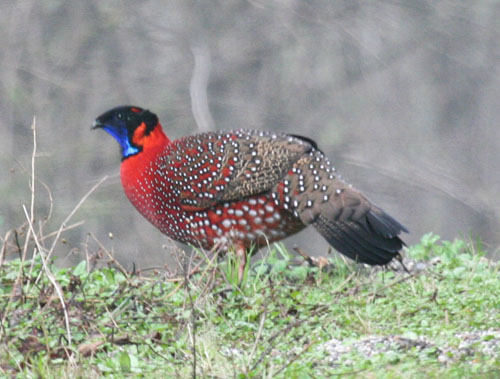



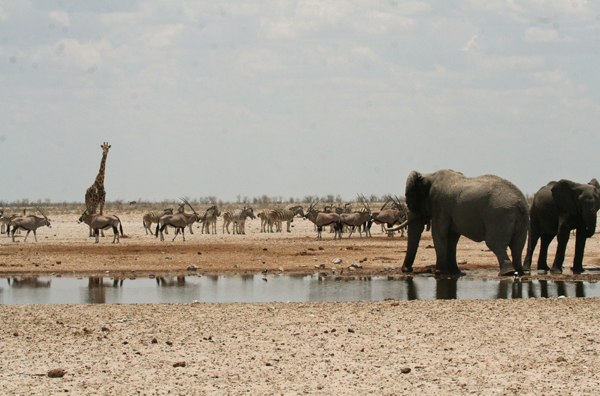
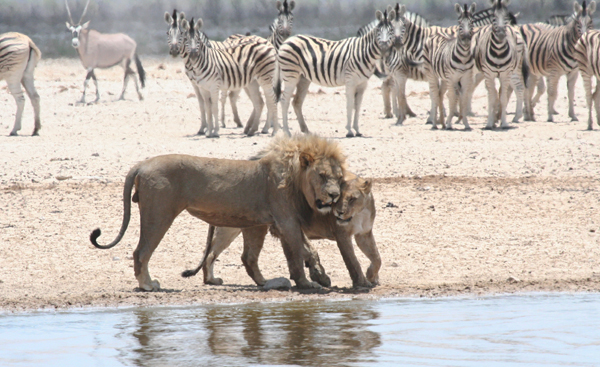
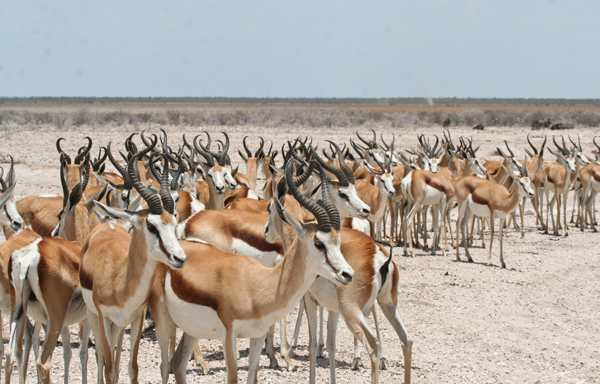
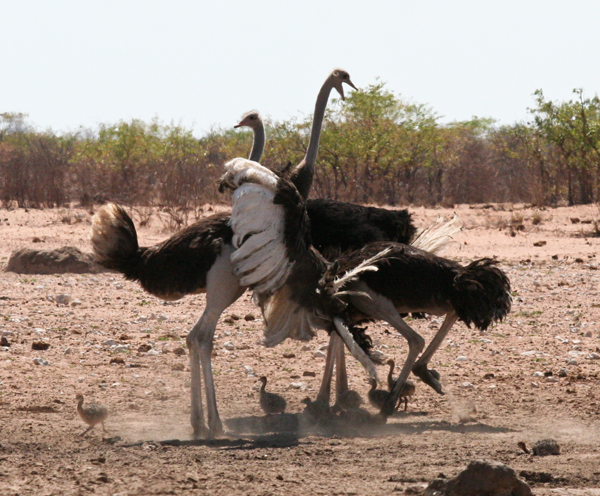
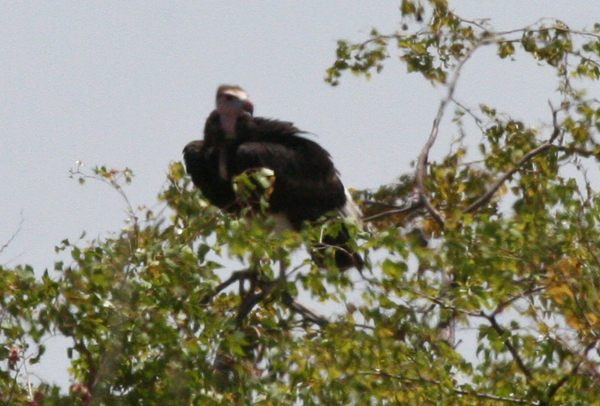

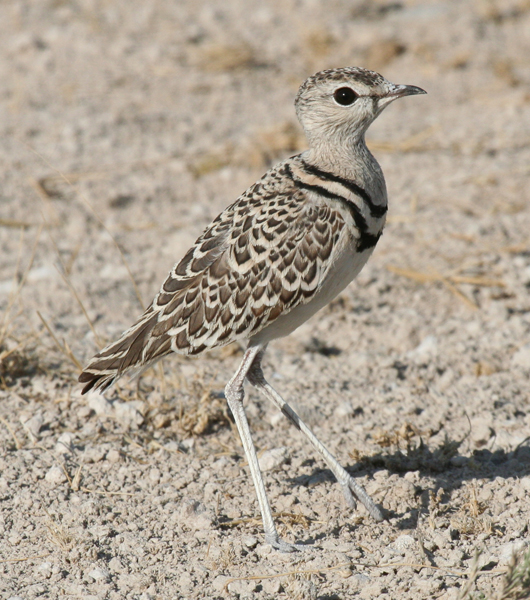
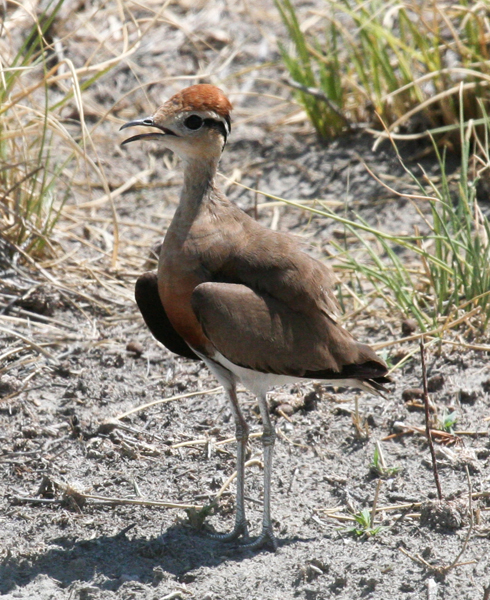

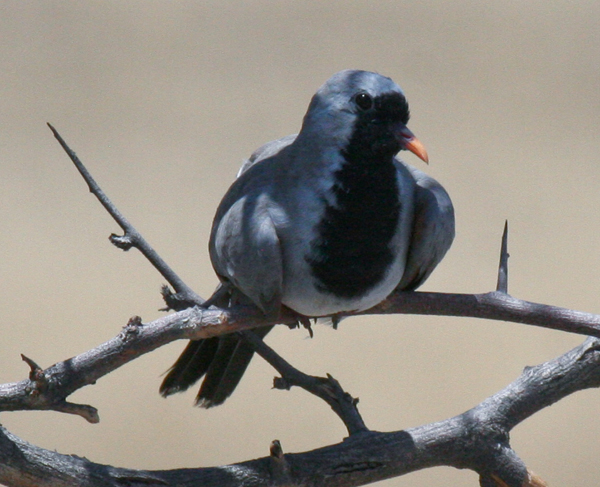

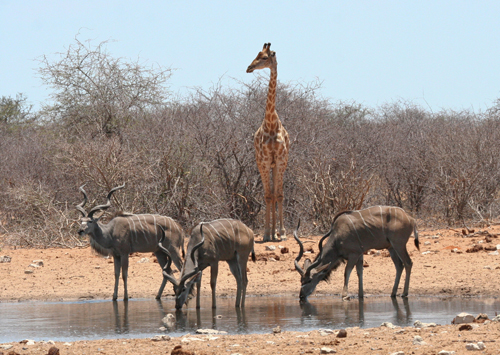


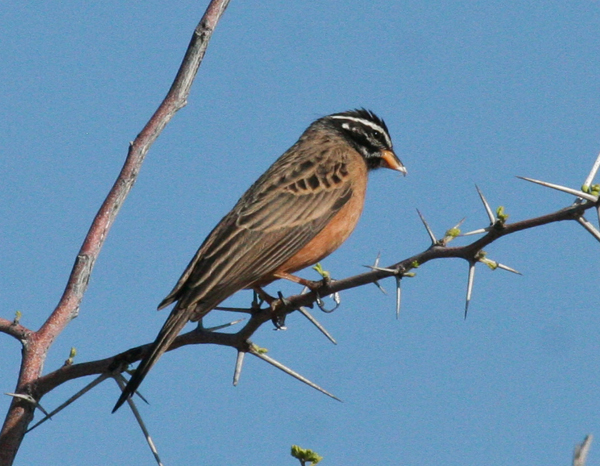
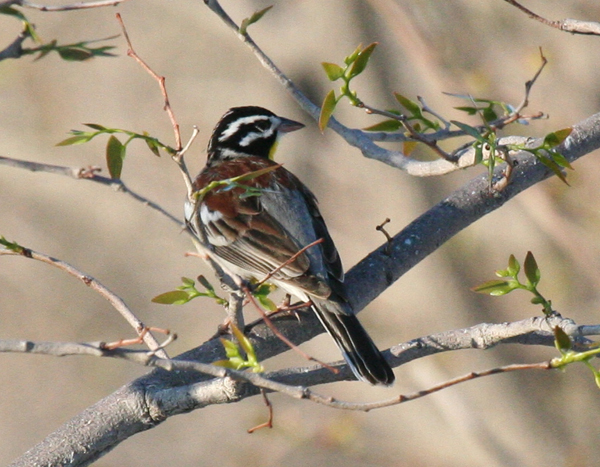


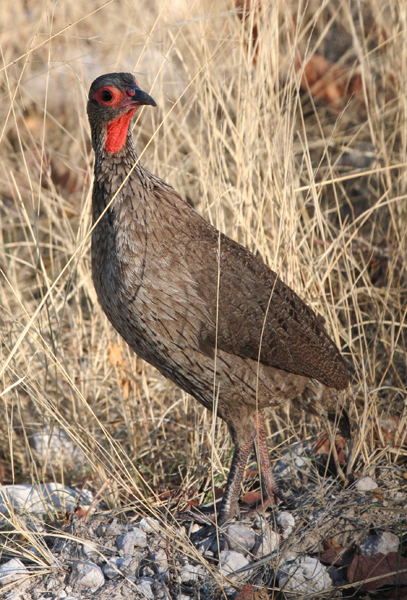
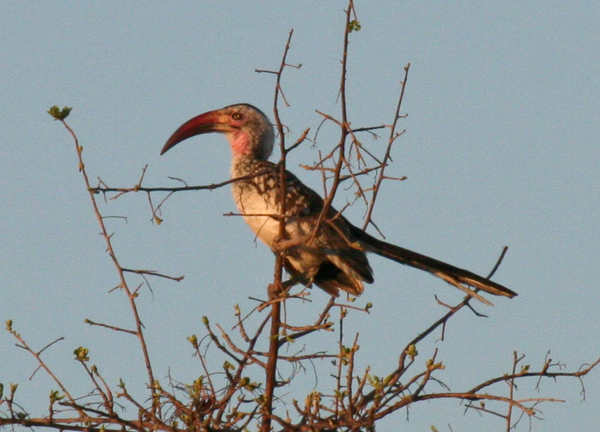
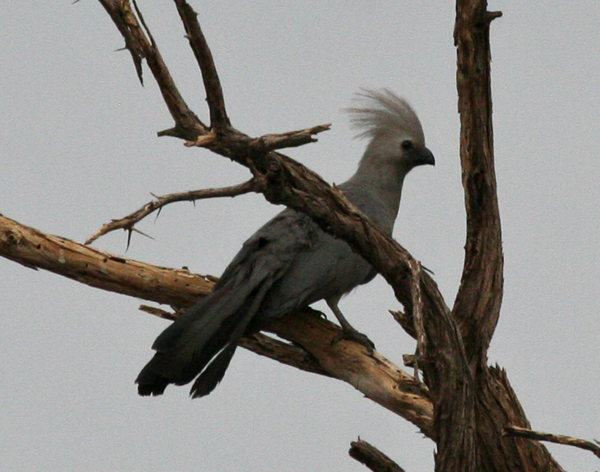
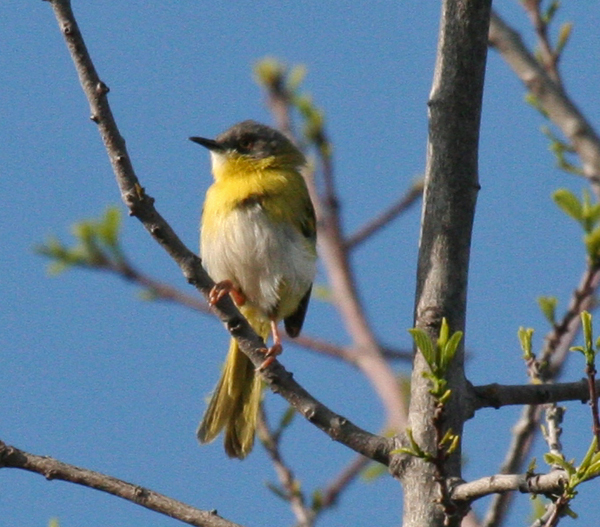

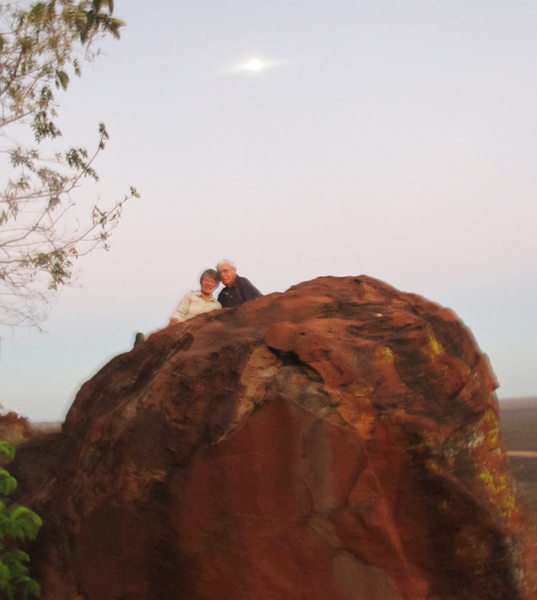
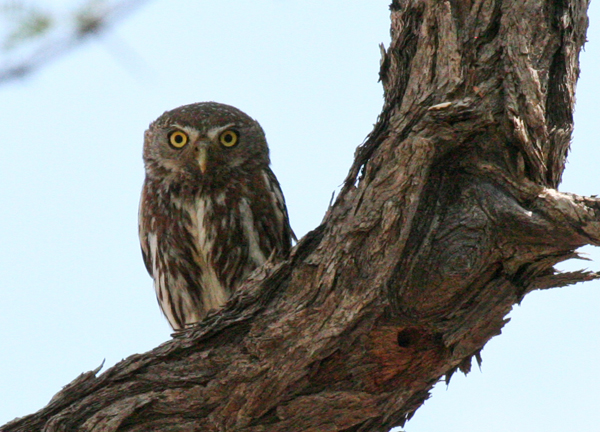
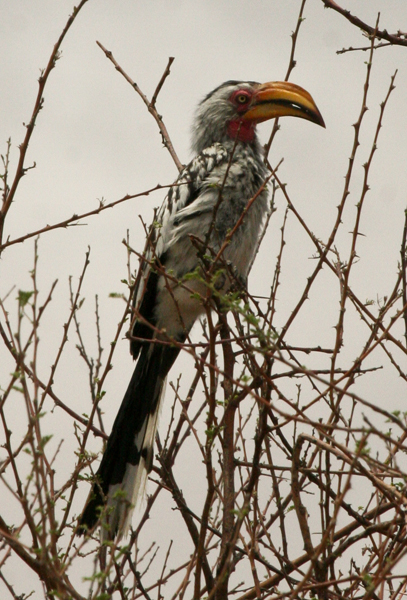

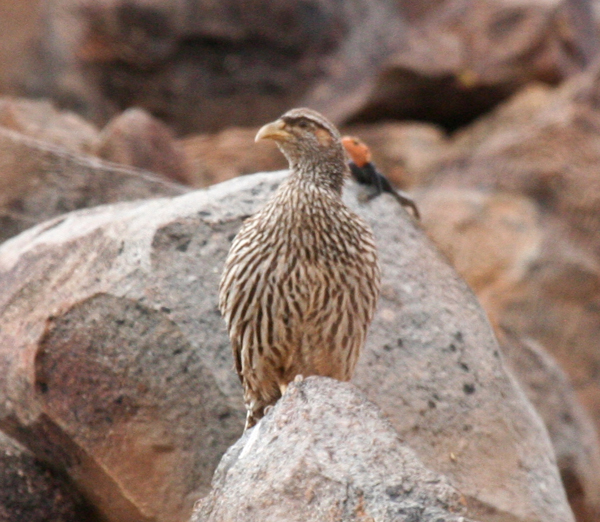
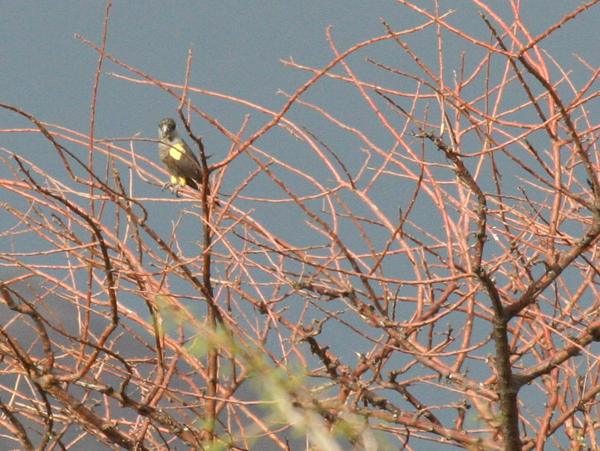
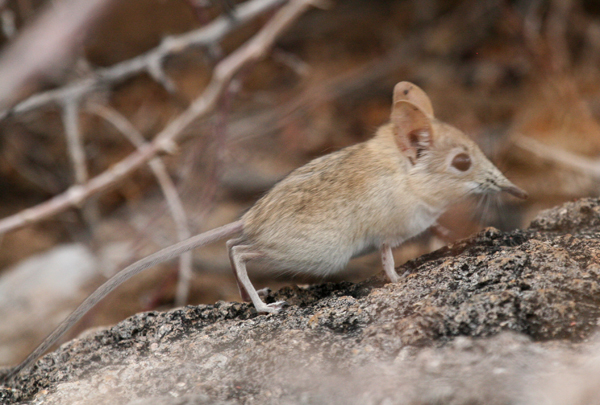
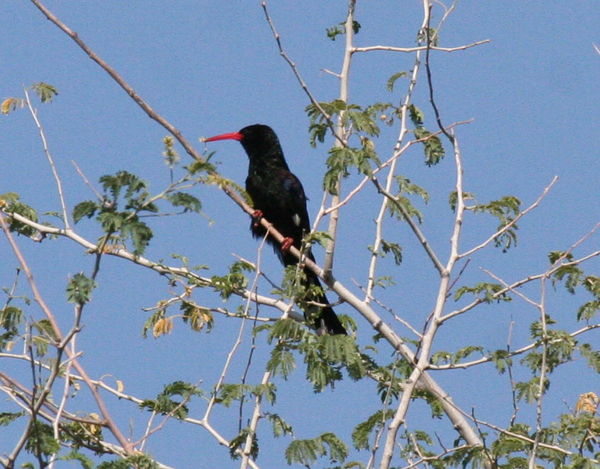
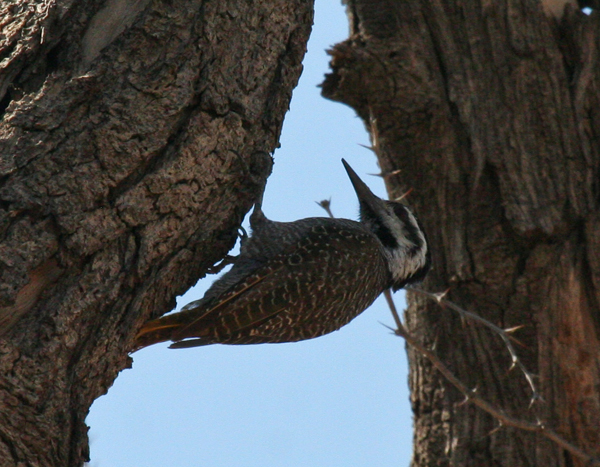
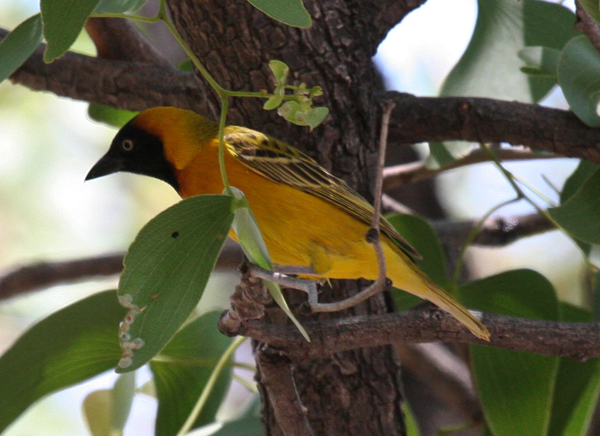
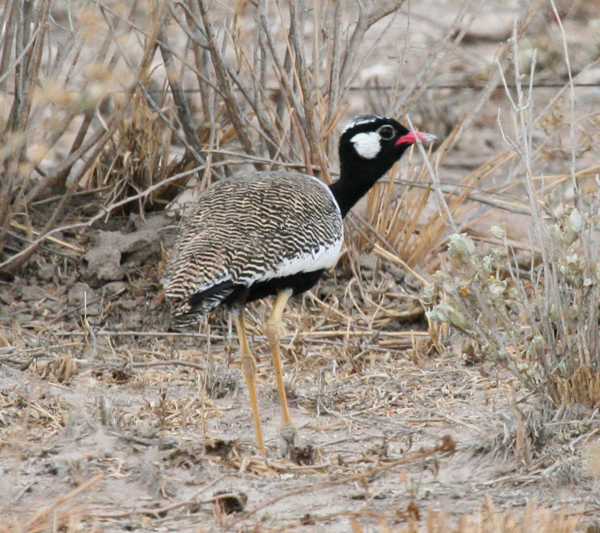
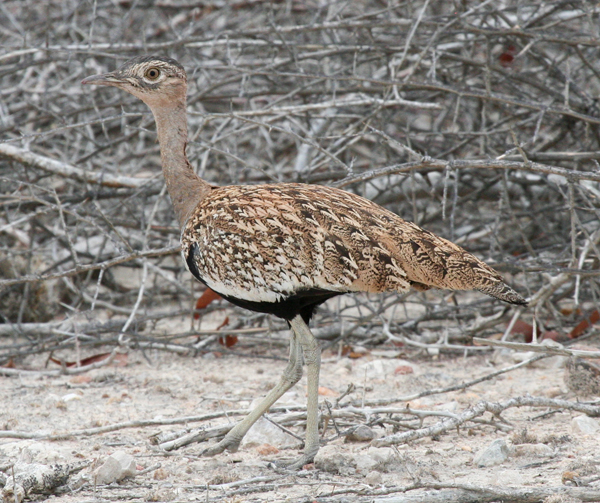

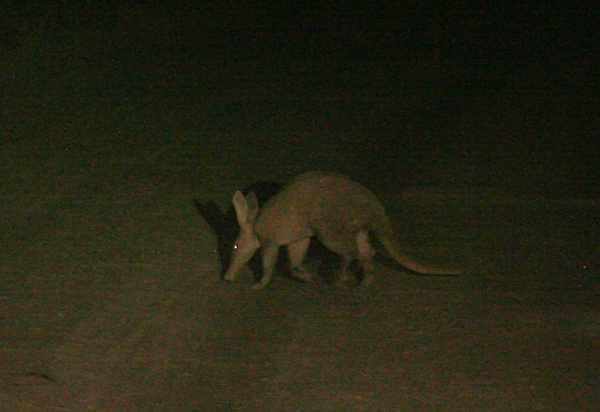
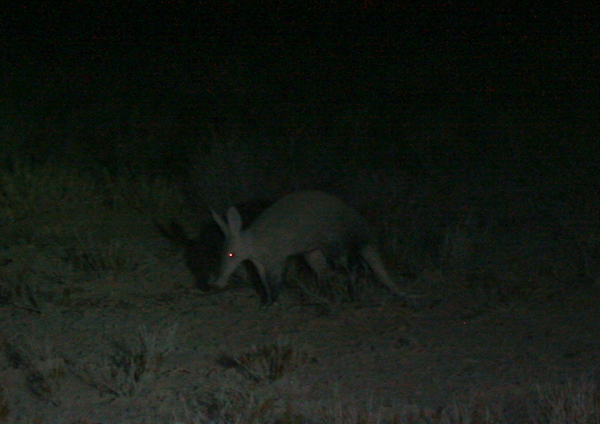

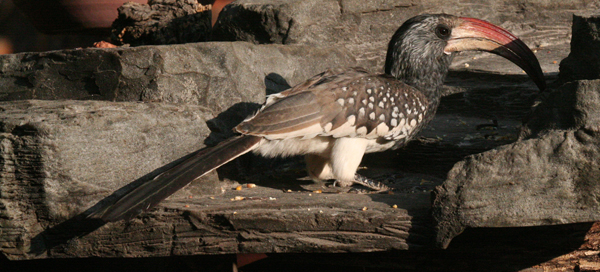
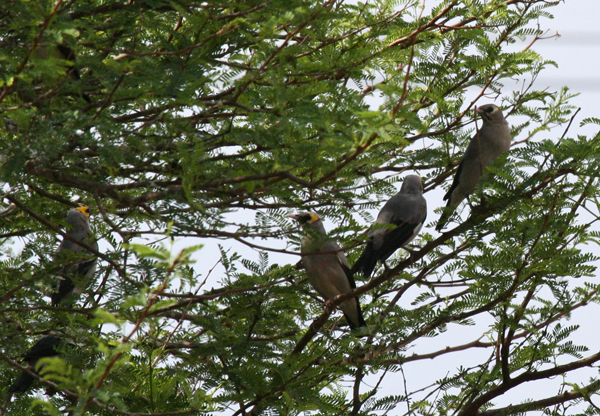

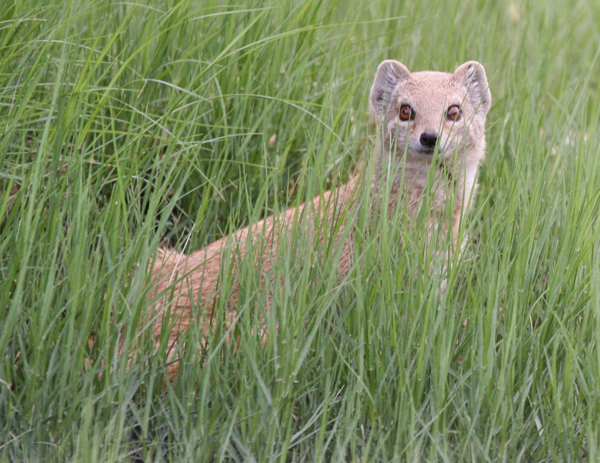

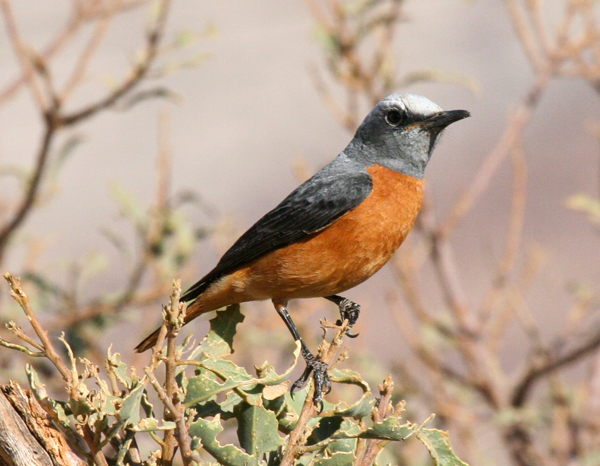
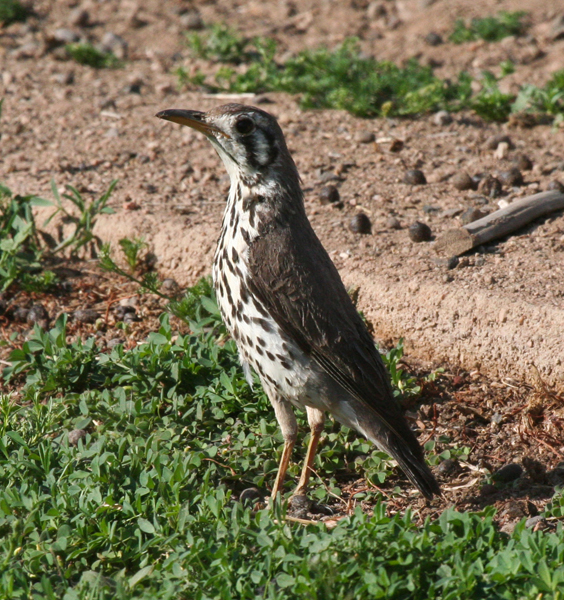
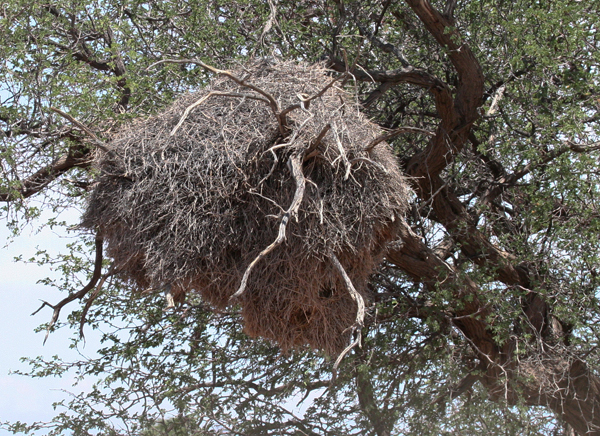

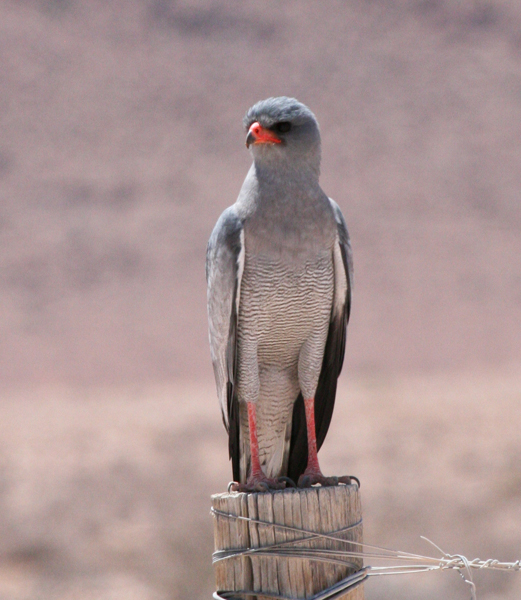
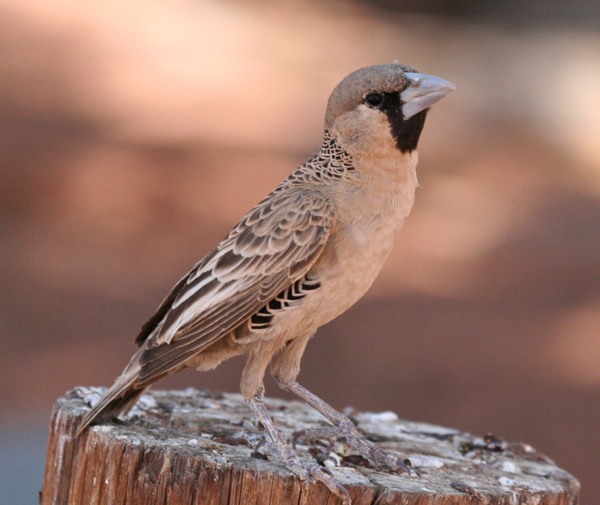

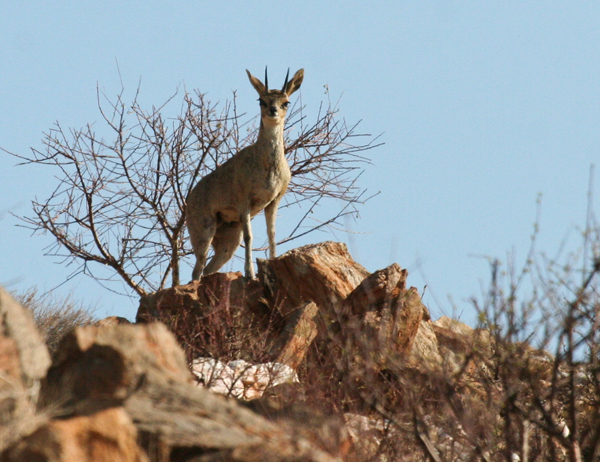

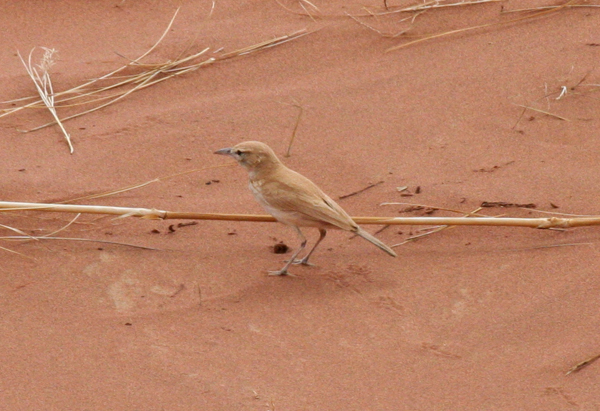


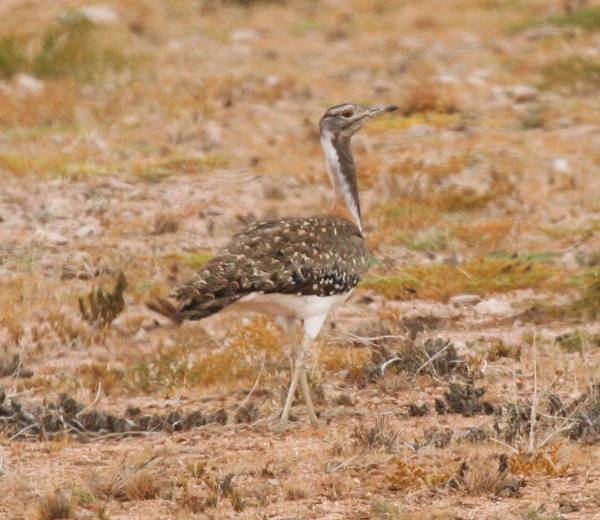
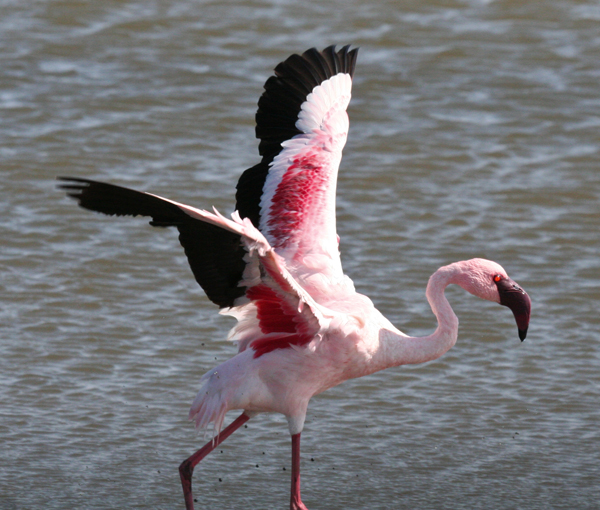
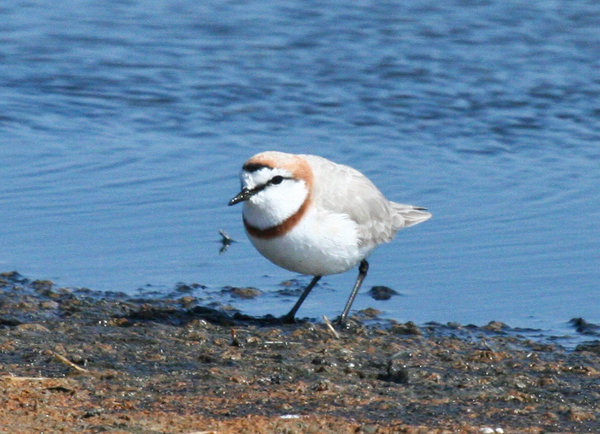


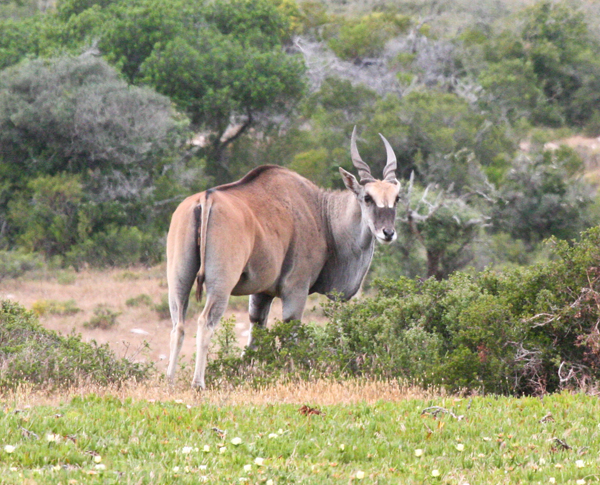
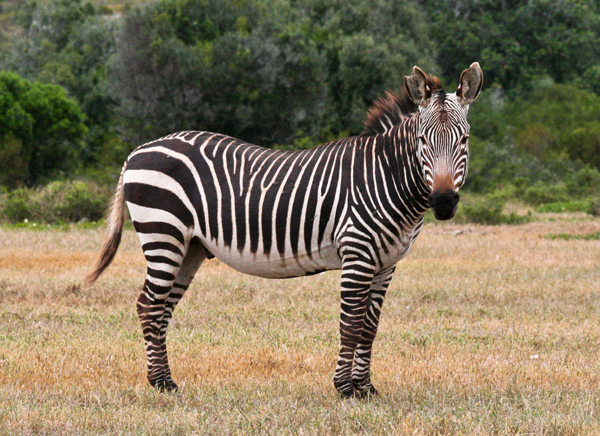
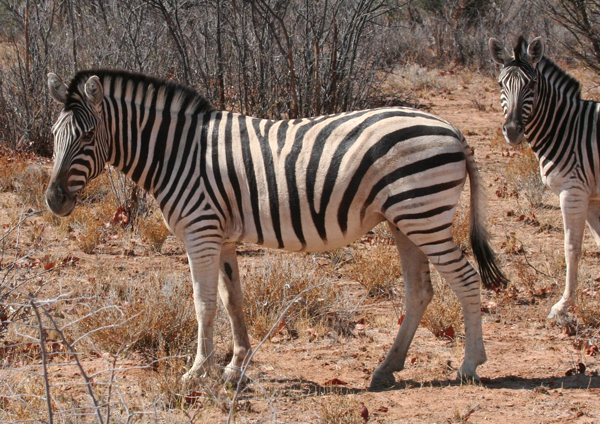
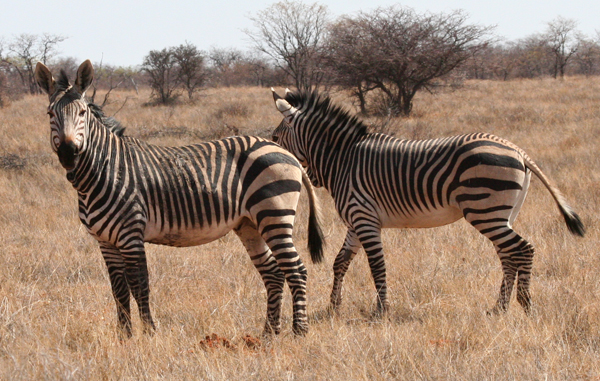


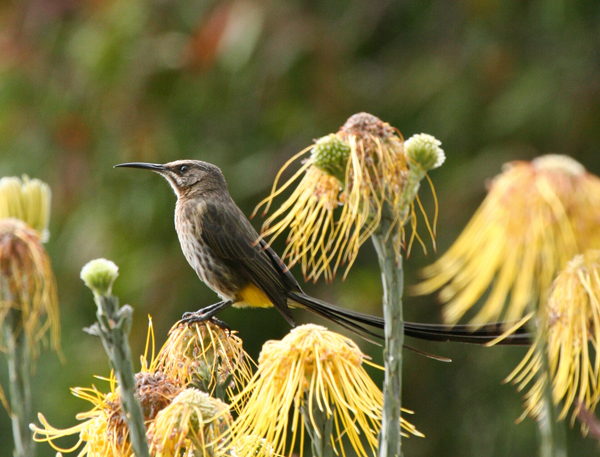

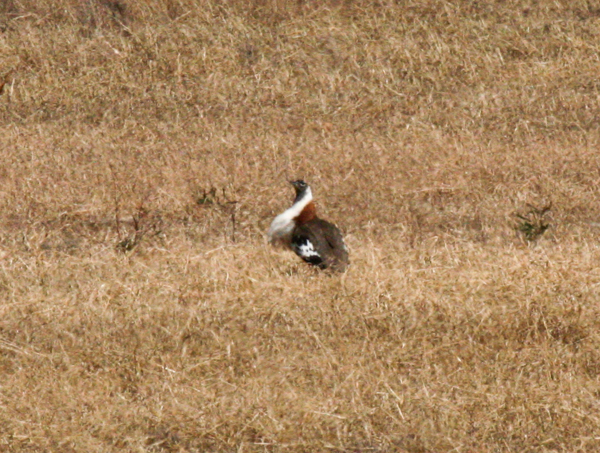 Blue Cranes
Blue Cranes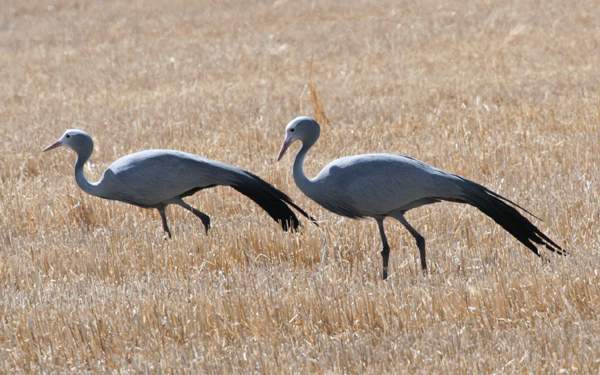 Orange-breasted Sunbirds
Orange-breasted Sunbirds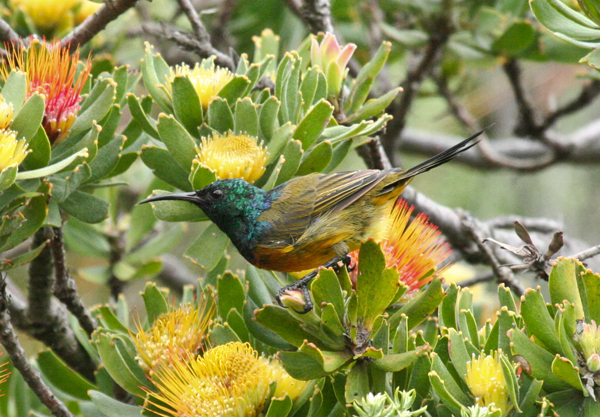 Lesser Double-collared Sunbirds
Lesser Double-collared Sunbirds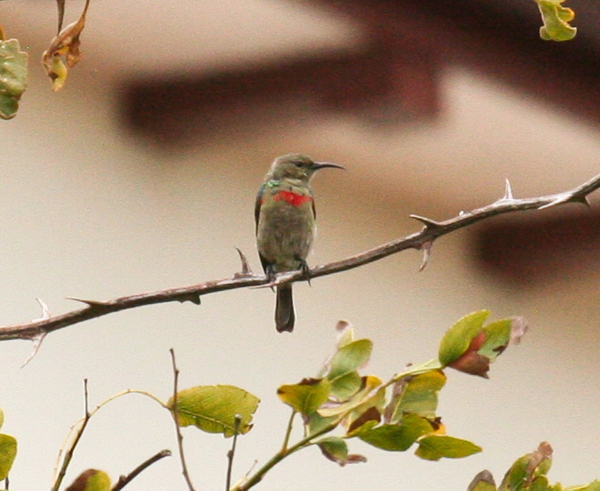 Southern Boubous
Southern Boubous Hartlaub’s Gulls
Hartlaub’s Gulls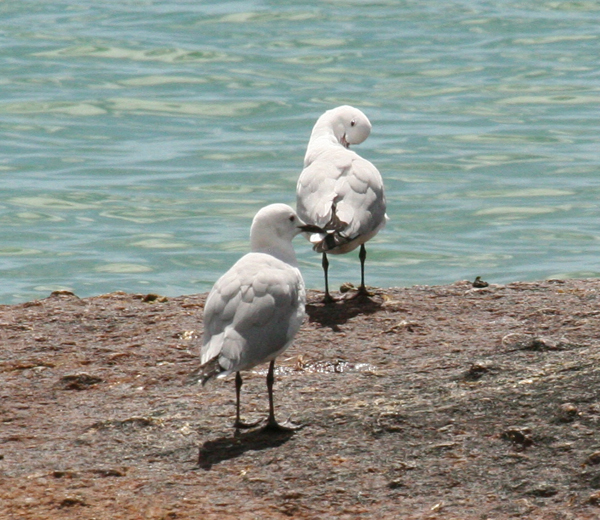 African Black Oystercatchers
African Black Oystercatchers Capped Wheatears
Capped Wheatears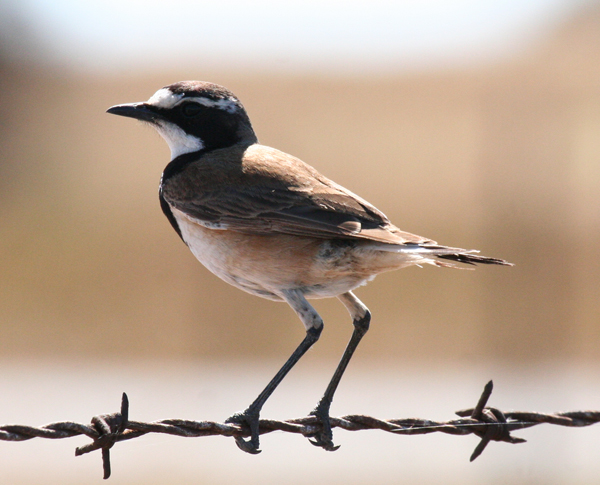 Spotted Thick-knee
Spotted Thick-knee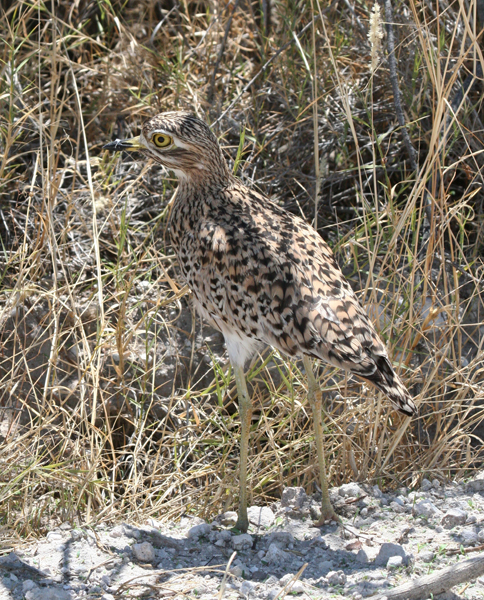
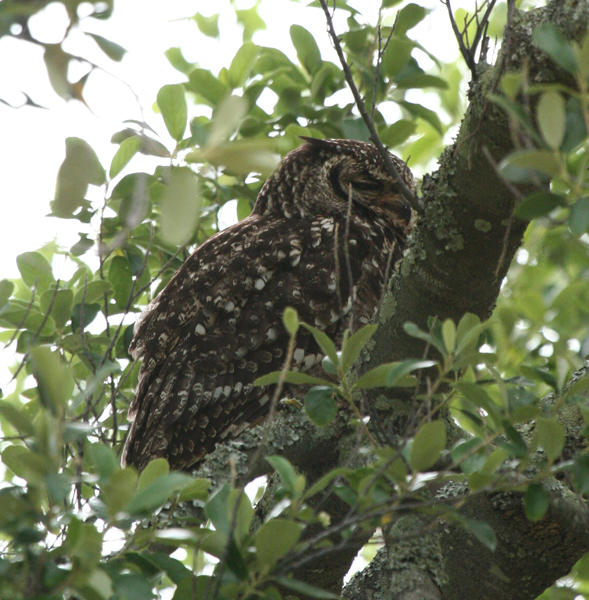 Bully Canary
Bully Canary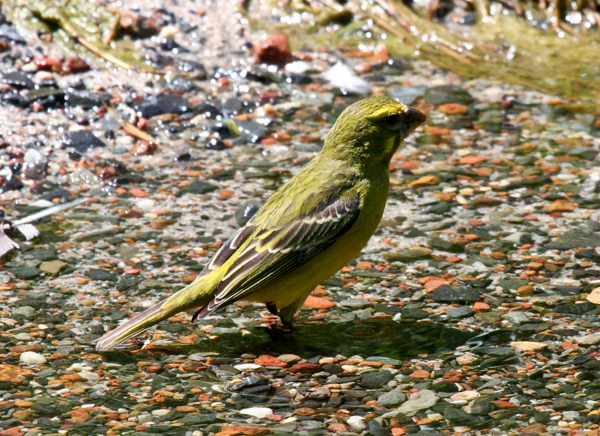 Bokmakerie
Bokmakerie